Thomas Doty – Storyteller
|
|
A Cave with Two Names
In the mid 1980s, I was invited to visit the Woman's Cave, also known as Koomookumpts' House.
My friend Roy and I drove to Tule Lake and met a group native women. Together we climbed straight up the steep, rocky slope of a nearby mountain. In half an hour, we were there.
Outside the entrance was the ancient rock writing symbol for cave, a circle within a circle meaning "hollow place." There was also a communication or talking symbol, two heads connected by a line. Both symbols pointed to where there was more talking: rock writing symbols inside that told the story of this sacred cave.
The shape of the entrance made clear that here was a place of divine feminine power. We carefully stepped in. The womb-shaped room was small, comfortable, safe.
We sat in a circle in silence, listening to whispers left behind by centuries of visitors. Then quietly, one by one, we shared stories or thoughts or emotions. This cave formed our words.
* * * * *
Information about the cave is tucked away in field notes, ethnographic studies and in the Old Time myths of the Modocs. The cave is a healing place, one of five that medicine people visit to gain power. Most have been women.
Koomookumpts is the Modoc creator. Sometimes called Kumush, his name means "Old Man of the Ancestors" or "Primeval Old Man." He created the world by scooping mud from the bottom of Tule Lake and shaping it into the Modoc homeland. A nearby rock called Koomookumpts' Bed (Petroglyph Point) is made of red-orange volcanic tuff and is considered to be the original scooped-up earth at the center of the universe. Until the partial draining of Tule Lake in the early 1900s, the rock was an island, visited by generations of Modocs who prayed for visions on its summit and carved their stories into the rock face along the lakeshore.
Koomookumpts' adopted son is Isis. Here's a portion of a Modoc myth....
* * * * *
Koomookumpts and Isis went to the top of a high mountain and built a house among the rocks. The house was red and nice to look at. Koomookumpts thought that people around Tule Lake would see his house, but couldn't climb up to it. Koomookumpts had the north side, Isis the south side of the house. The door opened to the east.
Koomookumpts didn't know that two women lived on that mountain, but they did. They were Skakas (a toad) and Nada (a bird). They both fell in love with Isis, and came to the house. Neither of them would go away, and Isis married them.
Eventually, Koomookumpts and Isis went off to have lifetimes of adventures dramatized in a variety of myths. And the women lived on in the cave. It became a source of empowerment. The spirit of Isis reveals itself in the large "eyes" of another cave entrance. On a ridge above the Woman's Cave, Isis keeps watch on his wives and protects Koomookumpts' House where he used to live.
* * * * *
Though Koomookumpts is mostly spoken of as the Modoc creator, he is much more. A magical disk associated with him suggests his existence as a sun deity. There is a carving of the disk inside the cave. His son Isis is often characterized as a moon deity. One of their many houses is called Shapasheni, "where the sun and moon live."
Koomookumpts has a variety of masks he wears. A favorite is Skell (Old Marten), a major myth character who establishes Crater Lake as another place of power. In some stories, Coyote and Koomookumpts are combined into a single character, a notorious trickster called Wus-Kumush. In the Modoc language, Coyote's name is Wus. Go figure!
And there's more. Koomookumpts often uses unbridled violence to satisfy his desires. Alfred Gatschet, in his 1890 study, The Klamath Indians of Southwestern Oregon, wrote, "K. shows himself as a tricky, treacherous, and low character, as a typical beast-god."
And where is he now? In one story, Koomookumpts turned into a rock still visible in the Williamson River. In another, he returned to the rock at the center of the world and crawled into a stone bed on the summit. There he remains in a long, long nap, waiting for the right moment to wake up.
In my story, The Day Tule Lake Came Back, I wrote....
* * * * *
Tule Lake came back today in waves of fog that splash the ancient shoreline.
White waves roll, and above this sump-turned-lake, the geese fly and the sun beats the day into high desert blue sky like nothing strange had happened.
Weeks ago I warned a farmer friend of mine: "The old stories say the lake will come rolling back. Someday Koomookumpts will tire of this land drained for potatoes and bring back the waves. You ought to move to higher ground."
He just smiled ... and stared....
But today it happened. The sun beats down. The geese fly over the ancient lake. White waves roll and roll, and make the Old Time stories smile.
* * * * *
Stepping out of the cave, Roy and I and the women gazed over the Modoc homeland. I contemplated the balance of dualities ... the two names of this cave, the lake-bottom farmland below and the shimmering blue of what's left of the lake, this cave full of feminine power and the nearby rock bed where the male creator still sleeps.
As the sun set over the western ridge, the full moon rose in the east. Driving home, I constructed the plot of a new story inside my head. Native Woman travels up the Rogue River from the mouth to the source. She builds a plank house at Boundary Springs and spends the winter there. In the spring, she walks over the Cascade Mountains, east to the Woman's Cave where she dreams of her spirit power and her sacred name. She becomes an empowered woman and a complete human being.
Back home, I opened a notebook and started scribbling.
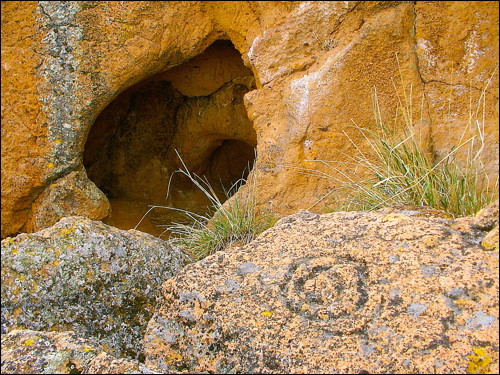
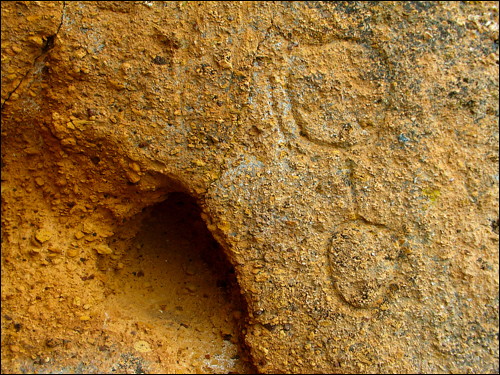
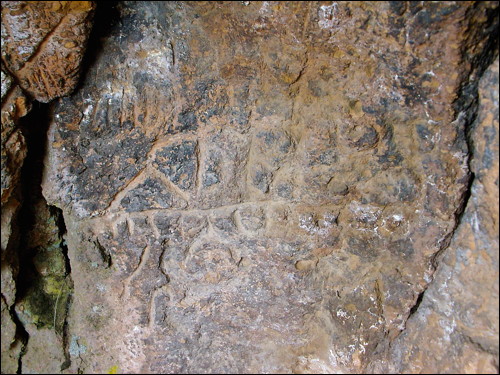
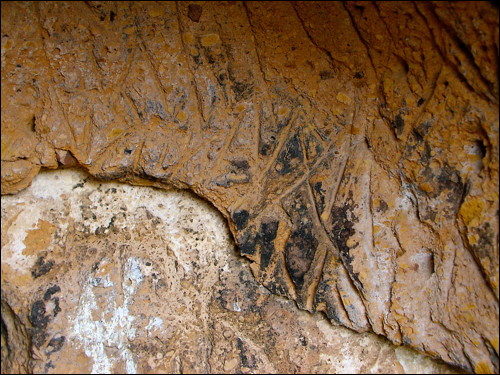
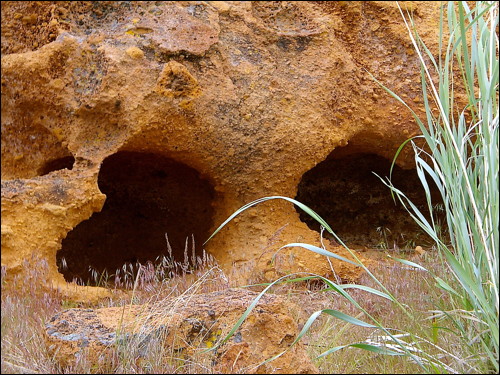
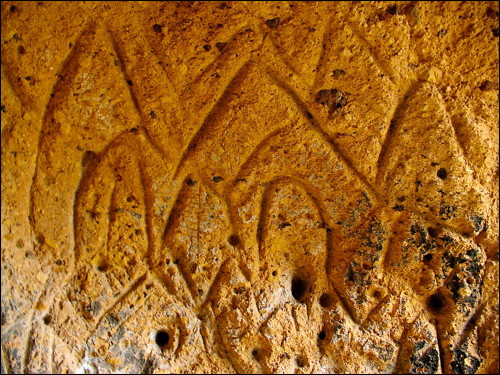
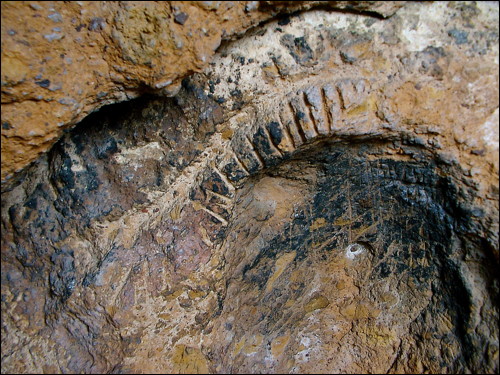
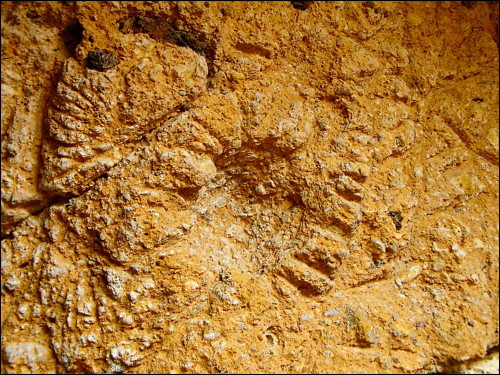
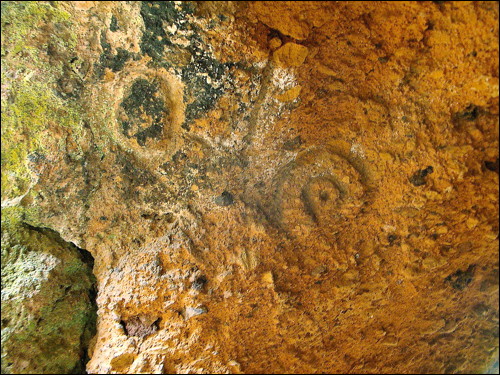
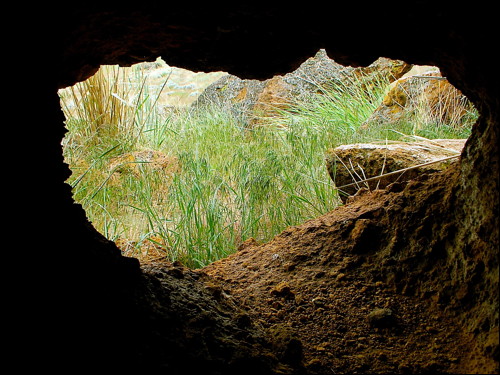
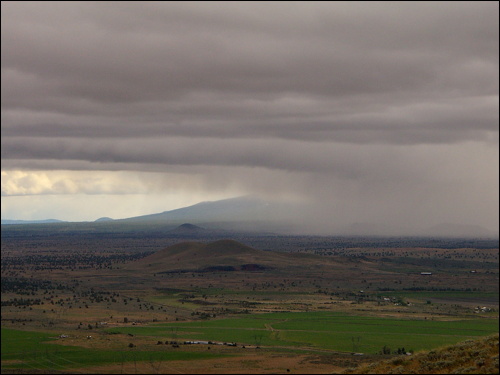
Photo Credits | Privacy | Donate
Website © 1997-
by Thomas Doty.

